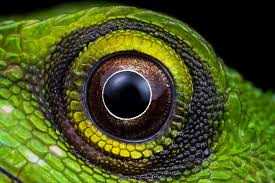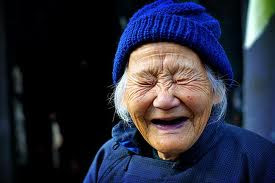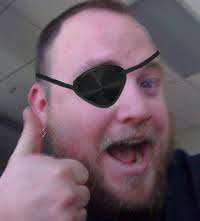Eyes are as the windows of the soul, especially in writing. With so much time and effort spent on describing landscapes, cityscapes, gadgets, knick-knacks, weapons, reasons, plot developments, conversations and whatnot that there's little room or time given to just how a person shows their inner emotions and thoughts to another. Some of this effort goes to clothing, some to expressions and a little bit to the eyes. Yet, the eyes, lips and condition of the hair and hands are extremely important signifiers as to mood and current situation. More so than knowing one weapon is being swung about while another fires. So, for those of you writing a character, here are some eyes that can shine, shimmer, darken, freeze, stare, glare and peer. Choosing the right one for your character adds a little bit more complexity and realism to your work.
The human eye. Consider shape, size, position, depth and colour.
Blind eyes. Consider why the eyes are blind as this will have an impact on what they look like. Also consider the degree of blindness and the human instinct to widen the eye to catch more of the light flitting about in the darkness. Also, blind eyes can look straight at another character just as often as past them as the character responds to sound. Choosing what happens at which moment will heighten their impact.
The slit eye. Consider the amount of light present. The more light the narrower the pupil. The less light the wider the pupil to the point where the pupil looks more rounded than slitted. Demons sometimes have slit eyes but whether they are like cat eyes or goat eyes depends on the cultural background of the writer, the origins of the demon or just personal taste on which is the spookiest.
Goat eyes. Consider iris colour, which can vary from brown to blue to silver to a pale whitey green as above. For fantasy creatures, a deep green or red is often chosen.
Bird's eye. Consider colour, placement, size and the presence of tiny eyelashes.
Eagle eyes. Along with the type of eagle eye, consider the heaviness of the ridge over the eye and the angle as these denote fierceness, strength, sincerity, directness and intent.
Lizard eyes. Consider whether the pupil is slitted or round, the depth of the eyes or how far they pop out, how big they are and the colour and pattern of the iris.
The fish or bobble eye. These are often considered expressionless but if you consider the position, the amount of bobble, their size and their colour expressions can be formed. Especially when described in conjunction with the mouth, which also varies per fish.
Whale eyes. These are easily described as soulful as they have a heavy innocence about them due to the size, colour and the shape of the lids.
Shark eyes. The term shark eyes is bandied about as much as eagle eyes but for those writing in characters with actual shark eyes rather than just piecing, blank or greedy ones, consider the presence of a lid, the colour and depth as well as the heaviness of the brow ridge. In some cases shark eyes look similar to eagle eyes and in others to fish or whale eyes.
Eyes on stalks.
Elephant eyes. To denote wisdom consider the wrinkles, depth, size and colour. For innocence consider the heavy eyelashes, width and slope. For sadness, simply have them hooded or near closed.
No eyes. you've likely all see the ripped out eyes of horror movies and can describe them well but having no eyes isn't always due to injury. Any individual in any species can be born with no eyes and the condition is rather similar to being born blind. Parts of the brain are simply missing instead of inactive (the eyes are part of the brain). Instead of a bloody or scarred mess with trauma attached you may want to create a character who never had eyes.
Eyes in hands. Usually they are human eyes in the hands but consider whether you'd prefer non-human eyes if the character isn't otherwise human or human-looking.
One Eye/Cyclops. Consider placement, depth, size, skull shape and brow shape. Having or using one eye doesn't always mean there's placement for one eye only. The greek cyclops above has placement for three but only one actual eye.
Three eyes/Triclops. Consider first whether the third eye is the result of genetics only or is there to peer into the other, be it spiritual or perceive another wavelength of light. Then consider placement, size, colour variance, type, positioning and above all the shape of the skull that must hold it. Having it on a stalk or hand etc. is also possible.
Glowing eyes. Consider if the eyes are the only thing to glow, their size, shape, colour, how much is to glow, if the glow is part of or the result of something else like machinery, radiation, contacts or flames etc.
Light reflective eyes (nocturnal creatures or characters). Colour and the amount of darkness surrounding them are essential. Also, remember that the shape is the shape of the pupil only.
No pupil or iris/All pupil eyes.
Snake eyes. Consider placement, colour, whether they are fake or real and the direction of the slit.
Fly eyes/Multiple lenses. Consider colour, size, placement and pattern.
Dead eyes are any of the above either showing absolutely no expression, a detached expression or no reflection of light. Also, dead eyes are any of the above with a degree of putrefaction, rot, fixedness or even just unfocused lenses.















































































No comments:
Post a Comment